Daniyar Nurseitov
Deep learning for table detection and structure recognition: A survey
Nov 15, 2022
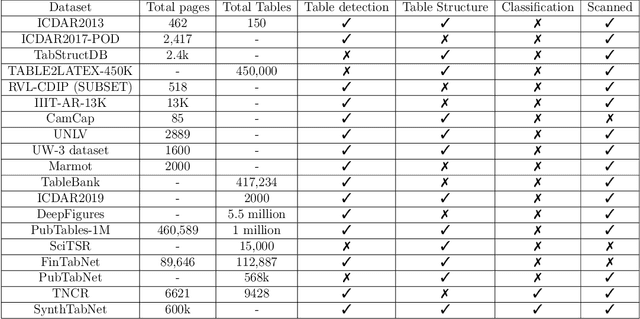
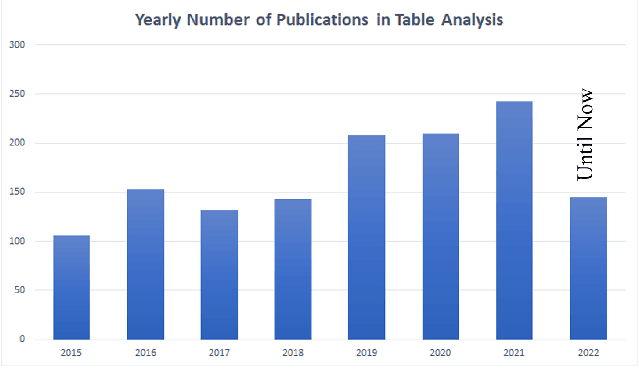

Abstract:Tables are everywhere, from scientific journals, papers, websites, and newspapers all the way to items we buy at the supermarket. Detecting them is thus of utmost importance to automatically understanding the content of a document. The performance of table detection has substantially increased thanks to the rapid development of deep learning networks. The goals of this survey are to provide a profound comprehension of the major developments in the field of Table Detection, offer insight into the different methodologies, and provide a systematic taxonomy of the different approaches. Furthermore, we provide an analysis of both classic and new applications in the field. Lastly, the datasets and source code of the existing models are organized to provide the reader with a compass on this vast literature. Finally, we go over the architecture of utilizing various object detection and table structure recognition methods to create an effective and efficient system, as well as a set of development trends to keep up with state-of-the-art algorithms and future research. We have also set up a public GitHub repository where we will be updating the most recent publications, open data, and source code. The GitHub repository is available at https://github.com/abdoelsayed2016/table-detection-structure-recognition.
Application of machine learning methods to detect and classify Core images using GAN and texture recognition
Apr 21, 2022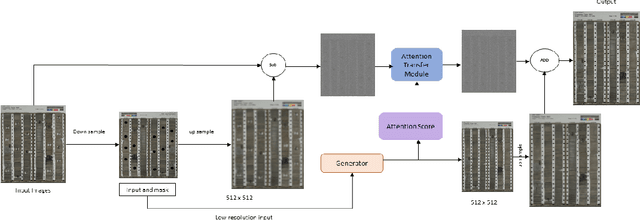


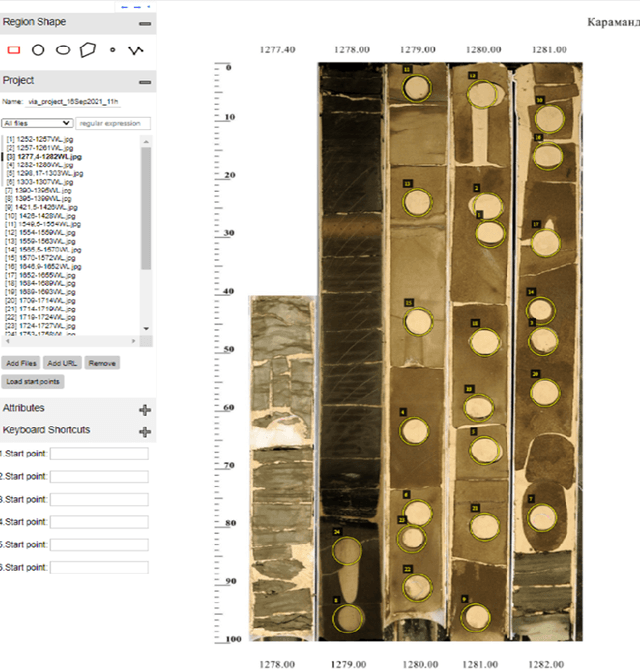
Abstract:During exploration campaigns, oil companies rely heavily on drill core samples as they provide valuable geological information that helps them find important oil deposits. Traditional core logging techniques are laborious and subjective. Core imaging, a new technique in the oil industry, is used to supplement analysis by rapidly characterising large quantities of drill cores in a nondestructive and noninvasive manner. In this paper, we will present the problem of core detection and classification. The first problem is detecting the cores and segmenting the holes in images by using Faster RCNN and Mask RCNN models respectively. The second problem is filling the hole in the core image by applying the Generative adversarial network(GAN) technique and using Contextual Residual Aggregation(CRA) which creates high frequency residual for missing contents in images. And finally applying Texture recognition models for the classification of core images.
KOHTD: Kazakh Offline Handwritten Text Dataset
Sep 22, 2021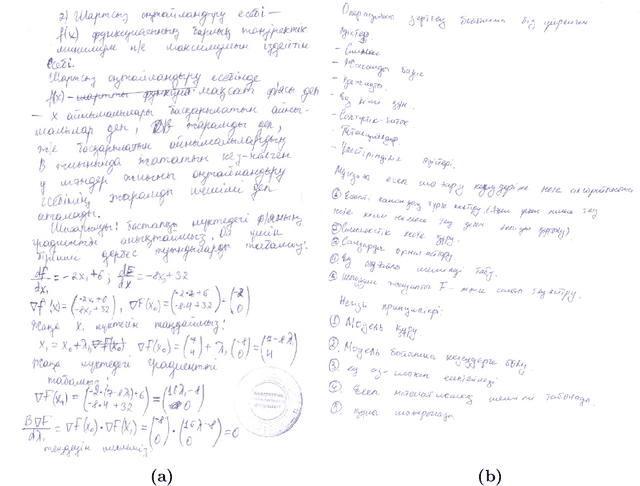



Abstract:Despite the transition to digital information exchange, many documents, such as invoices, taxes, memos and questionnaires, historical data, and answers to exam questions, still require handwritten inputs. In this regard, there is a need to implement Handwritten Text Recognition (HTR) which is an automatic way to decrypt records using a computer. Handwriting recognition is challenging because of the virtually infinite number of ways a person can write the same message. For this proposal we introduce Kazakh handwritten text recognition research, a comprehensive dataset of Kazakh handwritten texts is necessary. This is particularly true given the lack of a dataset for handwritten Kazakh text. In this paper, we proposed our extensive Kazakh offline Handwritten Text dataset (KOHTD), which has 3000 handwritten exam papers and more than 140335 segmented images and there are approximately 922010 symbols. It can serve researchers in the field of handwriting recognition tasks by using deep and machine learning. We used a variety of popular text recognition methods for word and line recognition in our studies, including CTC-based and attention-based methods. The findings demonstrate KOHTD's diversity. Also, we proposed a Genetic Algorithm (GA) for line and word segmentation based on random enumeration of a parameter. The dataset and GA code are available at https://github.com/abdoelsayed2016/KOHTD.
TNCR: Table Net Detection and Classification Dataset
Jun 19, 2021



Abstract:We present TNCR, a new table dataset with varying image quality collected from free websites. The TNCR dataset can be used for table detection in scanned document images and their classification into 5 different classes. TNCR contains 9428 high-quality labeled images. In this paper, we have implemented state-of-the-art deep learning-based methods for table detection to create several strong baselines. Cascade Mask R-CNN with ResNeXt-101-64x4d Backbone Network achieves the highest performance compared to other methods with a precision of 79.7%, recall of 89.8%, and f1 score of 84.4% on the TNCR dataset. We have made TNCR open source in the hope of encouraging more deep learning approaches to table detection, classification, and structure recognition. The dataset and trained model checkpoints are available at https://github.com/abdoelsayed2016/TNCR_Dataset.
Classification of Handwritten Names of Cities and Handwritten Text Recognition using Various Deep Learning Models
Feb 09, 2021

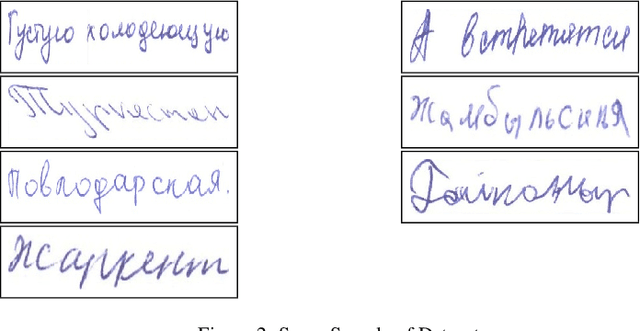

Abstract:This article discusses the problem of handwriting recognition in Kazakh and Russian languages. This area is poorly studied since in the literature there are almost no works in this direction. We have tried to describe various approaches and achievements of recent years in the development of handwritten recognition models in relation to Cyrillic graphics. The first model uses deep convolutional neural networks (CNNs) for feature extraction and a fully connected multilayer perceptron neural network (MLP) for word classification. The second model, called SimpleHTR, uses CNN and recurrent neural network (RNN) layers to extract information from images. We also proposed the Bluechet and Puchserver models to compare the results. Due to the lack of available open datasets in Russian and Kazakh languages, we carried out work to collect data that included handwritten names of countries and cities from 42 different Cyrillic words, written more than 500 times in different handwriting. We also used a handwritten database of Kazakh and Russian languages (HKR). This is a new database of Cyrillic words (not only countries and cities) for the Russian and Kazakh languages, created by the authors of this work.
Attention-based Fully Gated CNN-BGRU for Russian Handwritten Text
Aug 20, 2020



Abstract:This research approaches the task of handwritten text with attention encoder-decoder networks that are trained on Kazakh and Russian language. We developed a novel deep neural network model based on Fully Gated CNN, supported by Multiple bidirectional GRU and Attention mechanisms to manipulate sophisticated features that achieve 0.045 Character Error Rate (CER), 0.192 Word Error Rate (WER) and 0.253 Sequence Error Rate (SER) for the first test dataset and 0.064 CER, 0.24 WER and 0.361 SER for the second test dataset. Also, we propose fully gated layers by taking the advantage of multiple the output feature from Tahn and input feature, this proposed work achieves better results and We experimented with our model on the Handwritten Kazakh & Russian Database (HKR). Our research is the first work on the HKR dataset and demonstrates state-of-the-art results to most of the other existing models.
HKR For Handwritten Kazakh & Russian Database
Jul 08, 2020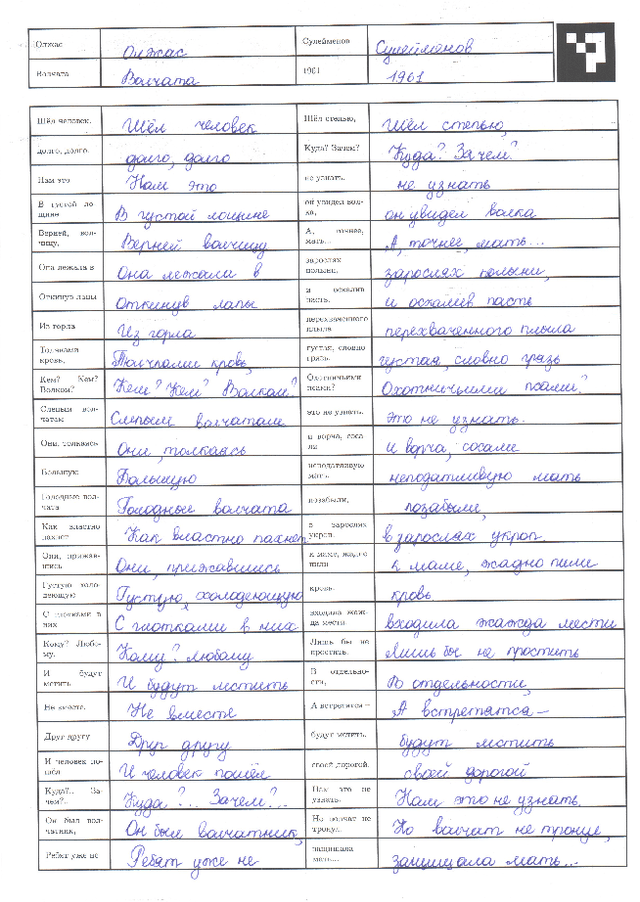
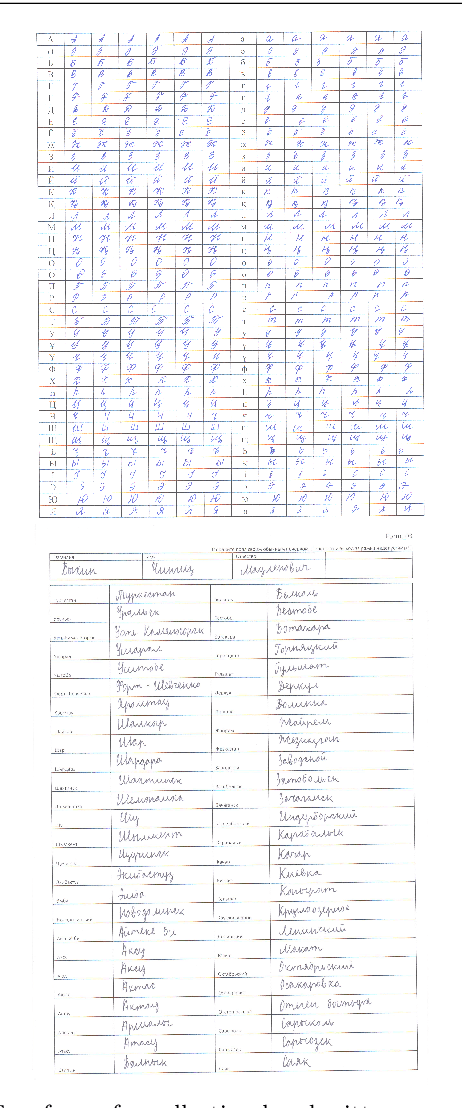
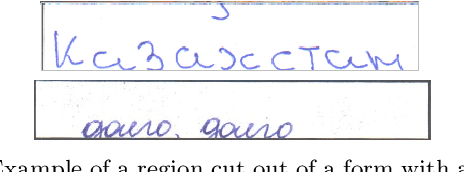

Abstract:In this paper, we present a new Russian and Kazakh database (with about 95% of Russian and 5% of Kazakh words/sentences respectively) for offline handwriting recognition. A few pre-processing and segmentation procedures have been developed together with the database. The database is written in Cyrillic and shares the same 33 characters. Besides these characters, the Kazakh alphabet also contains 9 additional specific characters. This dataset is a collection of forms. The sources of all the forms in the datasets were generated by \LaTeX which subsequently was filled out by persons with their handwriting. The database consists of more than 1400 filled forms. There are approximately 63000 sentences, more than 715699 symbols produced by approximately 200 different writers. It can serve researchers in the field of handwriting recognition tasks by using deep and machine learning.
 Add to Chrome
Add to Chrome Add to Firefox
Add to Firefox Add to Edge
Add to Edge